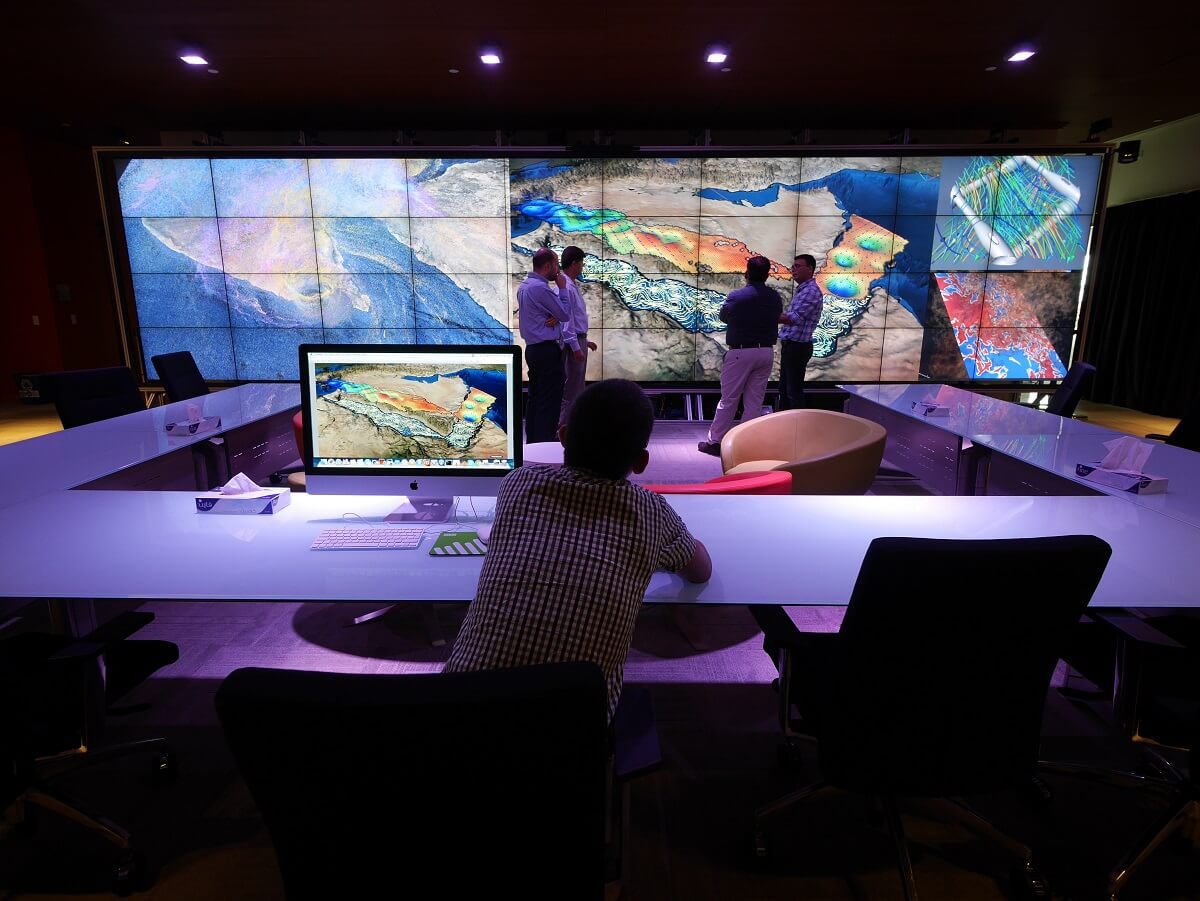Study finds Red Sea may be cooling rather than warming

KAUST researchers carry out a detailed analysis of Red Sea data in the KAUST Visualization Core Lab. File photo.
A recent study by a team including KAUST Earth scientists and oceanographers revealed that surface temperatures in the Red Sea may be cooling rather than rising.
Analysis of long-term data sets shows that the current high warming rates of the Red Sea appear to be a combined effect of global warming and natural long-duration changes in sea surface temperature.
"Our study has revealed a sequence of alternating positive and negative trends in Red Sea surface temperatures. Over the next decades, the trends indicate a cooling phase that may counter the effects of global warming," stated Ibrahim Hoteit, KAUST associate professor of Earth science and engineering.
.jpg)
KAUST Associate Professor Ibrahim Hoteit and his research group analyze data on the Red Sea in the KAUST Visualization Core Lab. File photo.
Hoteit and colleagues in the KAUST Red Sea Modeling and Forecasting Group used the University's supercomputer Shaheen II and state-of-the-art equipment in the KAUST Visualization Core Lab to analyze over 100 years of satellite data.
The data reveals how the Atlantic Multidecadal Oscillation (AMO) strongly influences surface temperatures in the Red Sea. Counter to global trends related to climate change, the research points to a cooling phase over the next few decades.
.jpg)
Ibrahim Hoteit, KAUST associate professor of Earth science and engineering, is pictured here on the University's campus. File photo.
The research team drew on satellite and historical data from the U.S. National Oceanic and Atmospheric Administration (NOAA), the National Aeronautics and Space Administration (NASA) and the U.K. Met Office. Collaborating individuals involved in the research, which was published in Geophysical Research Letters, included researchers from the University of Athens and the Hellenic Centre for Marine Research.
NOAA describes the AMO as "an ongoing series of long-duration changes in the sea surface temperature of the North Atlantic Ocean." According to NOAA, the changes are "natural and have been occurring for at least the last 1,000 years."
.jpg)
University researchers extensively study different aspects of the Red Sea (pictured here). A recent study by a team including KAUST researchers predicted Red Sea surface temperatures may be cooling rather than rising. Image courtesy of Shutterstock.
The research team's work shows that the long-term oscillation related to the AMO has modulated the warming of the Red Sea over the past three decades, and, having reached its peak over the past decade, is projected to enter a negative phase in the following years before warming up again 70 years from now.
"The AMO is a permanent feature of the Earth's climate system and is primarily associated with variations in the Atlantic conveyor belt," explained Hoteit. "The AMO has also been linked to important global climate impacts, such as the variation of mean surface temperatures in the Northern Hemisphere over several decades."

